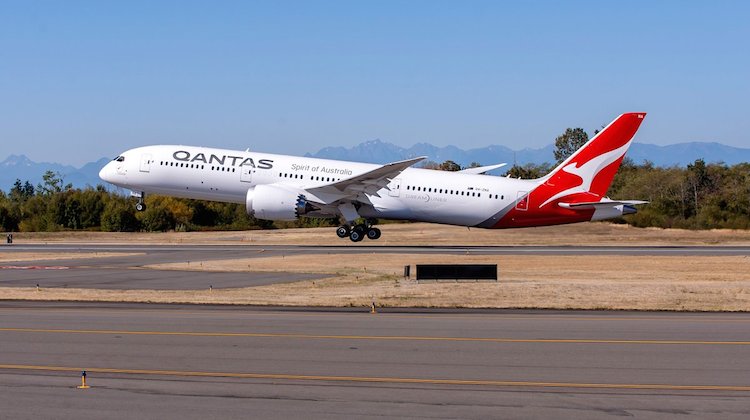
Qantas is on the cusp of a new era in long-haul travel as it prepares to take delivery of its first Boeing 787-9 Dreamliner on Monday.
The first of eight 787-9s the airline has on firm order is due to be formally handed over to Qantas at Boeing’s Everett facilities on Monday (US time) before it departs on its ferry flight to Australia on Tuesday and arrives in Sydney on Friday morning.
That first aircraft, registered VH-ZNA, will be quickly followed by the next seven aircraft over the next 12 months through to November 2018. The second Qantas 787-9 is in fact already on the final assembly line at Boeing’s Everett plant ahead of its delivery to the airline in early December, and it will be followed by aircraft three in January and aircraft four in mid-March, Qantas International chief executive Gareth Evans confirmed on Sunday.
Those four aircraft will allow Qantas to launch its Perth-London flights, pioneering nonstop commercial airline services between Australia and Europe for the first time.
“The four aircraft are actually patterned together so that the aircraft run Los Angeles-Melbourne-Perth-London in a sort of smile pattern,” Evans told media at Boeing’s Everett plant on Sunday (US time).
“It starts to help us build a western hub, and potentially we can add additional services to Europe through that hub in the future, potentially a Brisbane-Perth-Paris or a Sydney-Perth-Paris, building a hub and hitting those key European hubs directly.”
But Qantas has already announced that its next four 787s will be based in Brisbane, two of which will be used to replace Boeing 747-400s on the airline’s current Brisbane-LA-New York rotation. That will then leave the remaining two aircraft for future route opportunities.
“The range capability that this technology delivers will enable us to hit new destinations, potentially things like Brisbane-Chicago,” Evans said.
“This new technology, and the technology potentially to come, will revolutionise our international network. These are aircraft that are made for Qantas and we can do unique things with these aircraft that other airlines, because of their geography, perhaps will not, or don’t need to.”

In all the first eight 787s will allow Qantas to replace its five oldest 747-400s.
Beyond that Qantas holds options and purchase rights on a further 45 787s, but Qantas chief executive Alan Joyce says a decision on exercising some of those options won’t be taken until some point next year after seeing how the first aircraft perform in service.
“There will be a gap, we do need to bed down the [787] operation, make sure that everything is working,” Joyce said. “We do have flexibility with Boeing and there is availability [of delivery slots] at the end of 2019, 2020 onwards.”
It’s a relatively conservative approach to introducing the aircraft into service, but nonetheless it seems likely the ultimate Qantas fleet will end up as much larger than eight units.
Boeing’s latest Current Market Outlook forecasts airlines in Oceania (Australia and New Zealand) will require 150 medium-category widebody airliners of the 787 size over the next 20 years. Given Qantas is by far the largest of the three major airline groups in Australasia, that suggests a much larger Qantas 787 fleet in the longer-term.
Certainly Evans hints at the future potential of the aircraft.
“Because of their size, these aircraft are going to be great for our Asian network as well – point-to-point travel into Asia, 236-seats so there’s great opportunity and potential going forward for us to use this wonderfully flexible and efficient aircraft right around our network.”
And future 787 orders could be for the largest 787-10, or, potentially, the shorter 787-8, eleven of which are already in service with Qantas-owned Jetstar.
“This is a flexible order stream, so with appropriate notice we could move from a -9 to a -8 to a -10 and so it’s a great level of flexibility that we have to manage our fleet plan together with Boeing,” Evans said.










